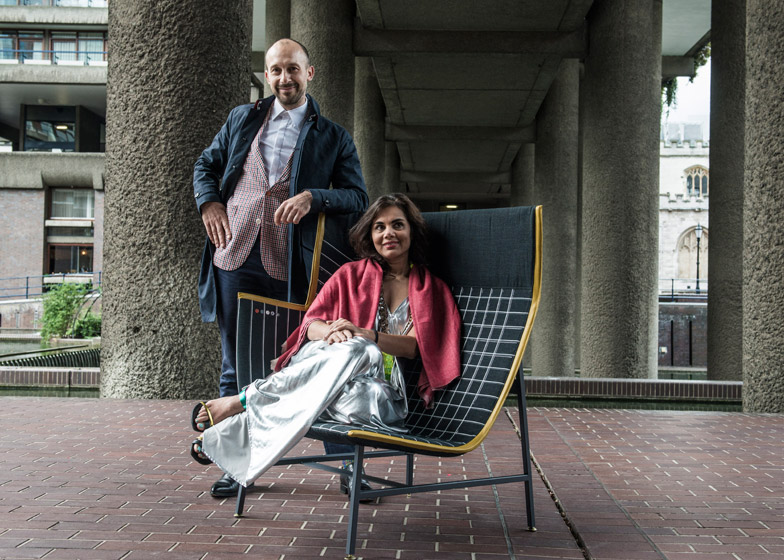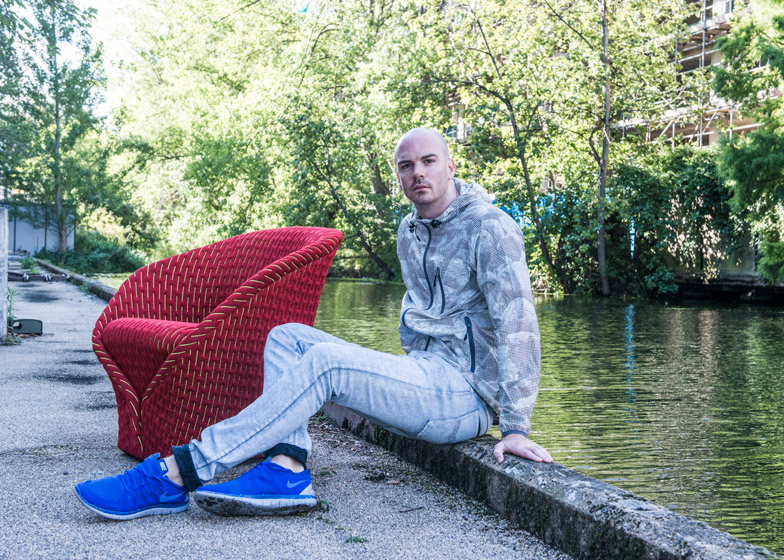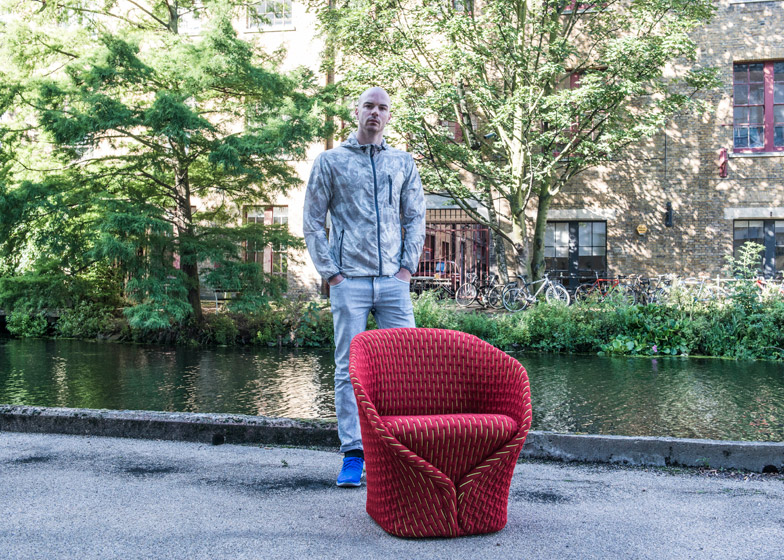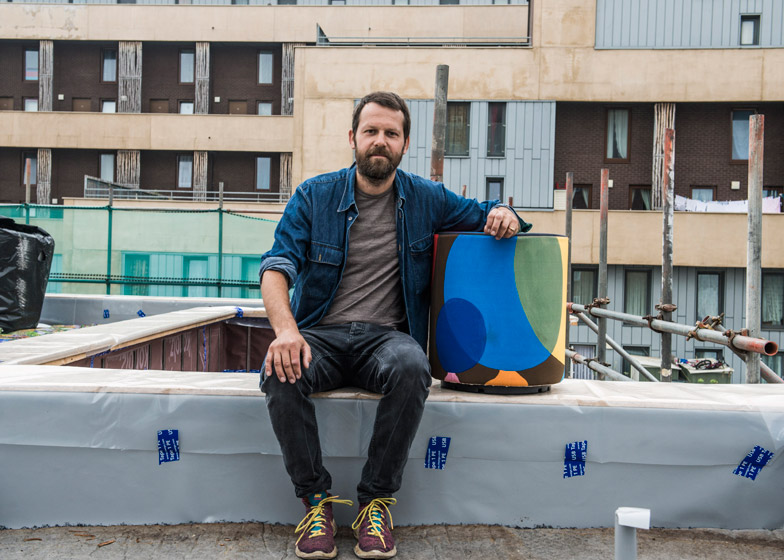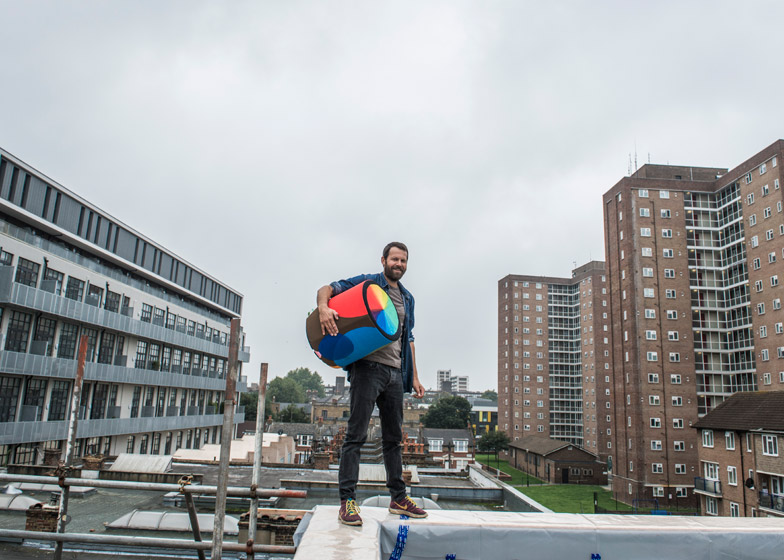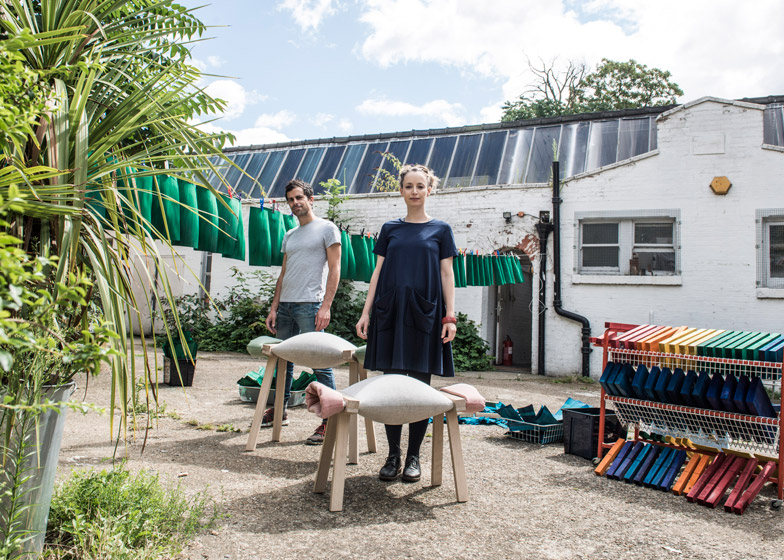London Design Festival 2014: Patrizia Moroso, the creative director of Italian design brand Moroso, spoke to Dezeen about her relationship with London and designers including Ron Arad, Ross Lovegrove and Tord Boontje, in this interview conducted to coincide with the Moroso loves London exhibition (+ slideshow).
Opening on 14 September at the brand's Clerkenwell showroom, the exhibition will feature work by seven London-based designers, all of whom have been nurtured and supported by Moroso over the years.
"London is for me a city of inspiration," Moroso told Dezeen. "I was here in the 80s, looking around. I was young, I was loving design and my heroes were people like Ron Arad, Tom Dixon and Danny Lane. For me, that kind of design – very free and very related with art – was very interesting."
She later joined the family company, where she was able to begin working with many of her favourite designers. In 1988 she worked with Arad on an upholstered version of his Big Easy chair, which until then had been fabricated in metal, by hand.
"It was Ron's first experience in having a design produced by a company in an industrial way," she recalled. "He never had done an industrial project before. But to be part of the first moment was very special."
She later worked with Ross Lovegrove to pioneer new plastic moulding techniques, helped kickstart the revolution in decorative coverings through her work with Tord Boontje and more recently gave a helping hand to new talents including Martino Gamper, Benjamin Hubert, Raw Edges and Doshi Levien.
Speaking to Dezeen at last year's London Design Festival, Moroso said that London had become "a sort of belly of the world".
"London is the centre of many kinds of thinking. Many people, young people but also people from all over the world, are attracted because London is open," she said. "Milan unfortunately is sitting in the past and the past is gone. I don't see energy now; the city is like a closed box."
Moroso loves London is at Moroso's London showroom at 7-15 Rosebery Avenue, London EC1R 4SP from 14- 30 September. Opening hours are Monday to Friday, 9.00am-5.30pm.
Here's the interview with Patrizia Moroso:
Marcus Fairs: What does London mean to you? How did your relationship with the city and its designers start?
Patrizia Moroso: London is for me a city of inspiration. I was here in the 80s, looking around. I was young, I was loving design and my heroes were people like Ron Arad, Tom Dixon and Danny Lane. For me, that kind of design – very free and very related with art – was very interesting. I think that maybe it's because the design education in England is very special, very different from what happened in other countries. In a way all my career I have been following that kind of design.
You know for the young people of my generation in the 70s and 80s, London was a sort of mix. Everyone wanted to see the Beatles and the Rolling Stones, so that was the first interest for me as a young teenager. But after that I was involved in design. When I was around 20 or 25 I started to work in the family company, and of course I started following my design interests.
So in 86 or 87 I started coming here, going to Covent Garden, discovering the showroom of Ron Arad, and later I started to work with him. I knew him as an artist using design as a kind of expression. For me it was interesting because it was in that kind of space between art and design.
Marcus Fairs: Ron Arad was the first London designer you worked with. How did you meet him and what was the first piece you collaborated on?
Patrizia Moroso: Ron was one of a group of British designers presented in an exhibition by the British Council in Milan and someone introduced me to him. It was 87 or maybe 88. I discovered that he was trying to make an upholstered version of the Big Easy chair. But he didn't know how to do it. At that time he was not working with industry; he was just making limited editions, creating things by himself.
And so the first collection was simply the version of the big volumes that he was producing by himself in metal, with hammers and fire and so on. The idea was to transform these metal sculptures into soft and comfortable objects for everyone.
To make them he made the shape in metal and then asked an upholsterer in a factory to cover it with foam and then with a red vinyl. The objects were fantastic and looked cheaper but in reality the cost was bigger, much bigger than the metal sculptures.
He told me he was trying to make a cheaper version because my objects are like art objects and usually sold to collectors, museums. But he said: "The people that love me are young people with no money to buy a metal sculpture, so I tried to make a cheaper version using upholstery."
So I said to him: "Do you want me to help you?" And he said: "Okay, let's do it." We met a few months later and he had some sketches and some scale models – he modelled the shape in metal just to show us what he wanted because it's not so easy to copy a sketch. In those years we didn't have 3D renderings or anything like that.
So he was really working like a sculptor, working with his hands. We presented something like 10 or 15 pieces. They were not changing the spirit of Ron but for me it was adding: adding colour; adding softness; changing the price of the final object. So in a way we were reaching our goal to have something more possible for more people to buy than before.
It was Ron's first experience in having a design produced by a company in an industrial way. He never had done an industrial project before. After us he started with Vitra and many others of course. But to be part of the first moment was very special.
Marcus Fairs: Who was the next London designer you worked with?
Patrizia Moroso: Next was Ross Lovegrove, several years later. Someone introduced me to Ross. He presented something very nice to me, very simple, but with a sort of British touch, I have to say. It was a simple sofa called M sofa, like models I suppose, but also because the armrest had a sort of curve design in it, like a sort of hand.
A few years after, Ross was developing his personal idea of his own design. In the end his theory was written in a book that he called Supernatural. His idea was that design could follow the rules of nature; nature is essential but very different from minimalism, which is an artificial kind of thinking.
At the same time, around 2002, we asked Ross to imagine a plastic chair, because all the ideas that were coming out from this kind of thinking were very interesting for me. He was working with digital technology a lot and I was wondering what we could do with these kinds of tools. It was our first experimentation with gas moulding; it was one of the first uses in Italy of that kind of technology.
That Supernatural chair, to me, is beautiful. It's still one of our best sellers and is a symbol in a way of this thinking.
Marcus Fairs: Since then you've work with a lot more London designers.
Patrizia Moroso: In the early years I was just working with Ron and Ross, but in the last 10 years I've been visiting London a lot. I worked with Tom Dixon for a while but I've only done one object with Tom. I've done something with Ron and Ross every two or three years.
Marcus Fairs: What is your relationship to London now? Why do you want to work with so many London designers, is it something special about the city, or something like because you come here a lot?
Patrizia Moroso: I think it is because I come to London often. Sometimes I just come to London to meet someone. For example I knew about Tord Boontje from an article in Elle Decoration. It was a very small article about this young designer, just out from the Royal College of Art, who embroidered onto a simple chair.
This kind of thing from that moment was very new. At that time no-one was using strong decoration, no one was embroidering, especially a male designer. I found this so new and brilliant and I felt it was changing something. And I was right, because if you remember after Tord everyone was feeling free to put flowers everywhere, and after a while it was a bit too much.
Tord was important for that because he showed a way that nobody had wanted to try. It wasn't only about flowers, of course; it was about the surface, how the surface doesn't have to be plain but could be something more: layers of embroidery; layers of stuff cut out; many other things that give the object a special value, a special sensibility and sensuality.
So I called him. I remember it must have been January and I asked him if he wanted to express all his work in our showroom in Milan during the fair in April. So I gave him freedom to create what he wanted in our showroom. And of course what he did was absolutely fantastic. Nobody before had done anything like that, a big decoration, inviting us to a sort of paradise, and to stay there, and to see this as a possible world.
Marcus Fairs: How did you start working with Doshi Levien?
Patrizia Moroso: I receive a lot of letters every day. And I have no time to open everything, and usually what I find inside is… oh my God. But that day I saw a beautiful pink envelope. Inside that envelope was a little story about them, explaining who they were, what they had done and pictures of the studio. The same day I saw an article about them in a magazine: two young designers living in east London, and they were one Indian [Nipa Doshi] and one English [Jonathan Levien]. In this case something very special touched me, and was also a coincidence to see this magazine.
And I had a look at this pink envelope on my desk, and they were the same people I had seen two hours before, as I believe in signs I thought, 'Oh, now I have to call them!'
So, you know, it's not that you have a very precise project in mind, but you let the things that people who can touch you make something. So I called them and one week later I was in London in their beautiful little studio. I saw some of their objects; these objects were really interesting because they were very different, not just furniture. There were dresses, tools for the kitchen, other kind of objects.
One of these objects was a sort of string bed; they said it was a charpoy. In India it means 'four legs,' and it is an object you can find everywhere in the east, from Turkey to Japan more or less.
But with that kind of shape, it's just from India. So we decided that for the first year we could do a very special experiment – the concept was Indian traditional objects but looked through a British lens. And so we did this object that was made partly in Italy, but the fabric of the mattress, was produced in India by hand in a super fantastic place that was managed by the aunt of Nipa and so was part of her family know-how and experience. Because her aunt headed one of the most important companies in India for producing embroidery.
Dezeen Book of Interviews: our new book, featuring conversations with 45 leading figures in architecture and design, is on sale now
The pattern that Nipa designed was a geometric game that everyone in India used to play while they were sitting on a charpoy waiting for something. It was a very special thing; it was a very nice story about Indian tradition. It's a great story and this object is talking about the Indian tradition of living but it's also connected with the modernity or idea that an Italian company can produce these objects.
So the objects are produced by great people in India – the greatest embroiderists that are there – and also in Italy with a very high-tech way of making. So the combination was really very interesting for me. It's a perfect object with a beautiful story behind, showing that two cultures can be connected and can be together, always.


